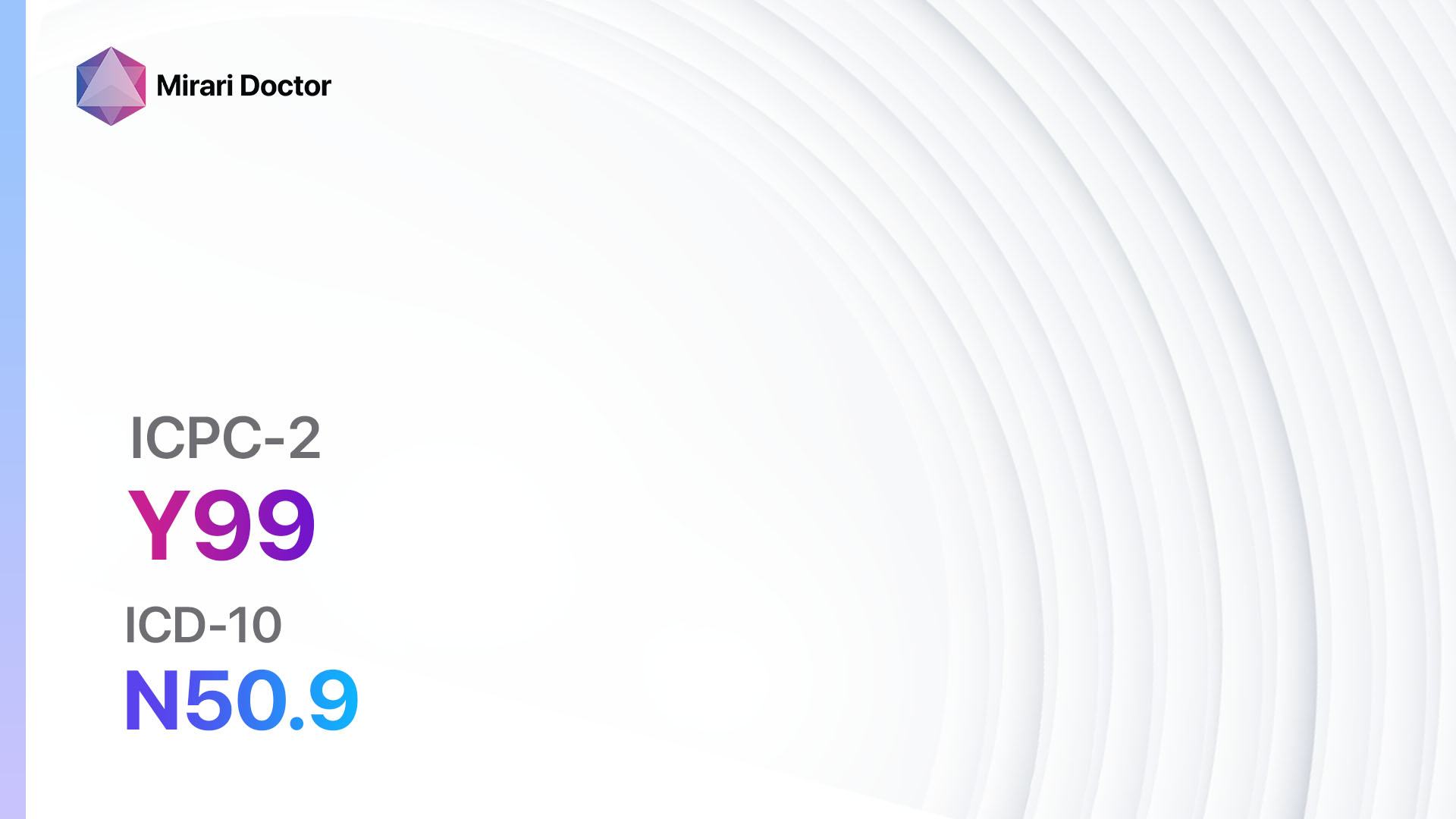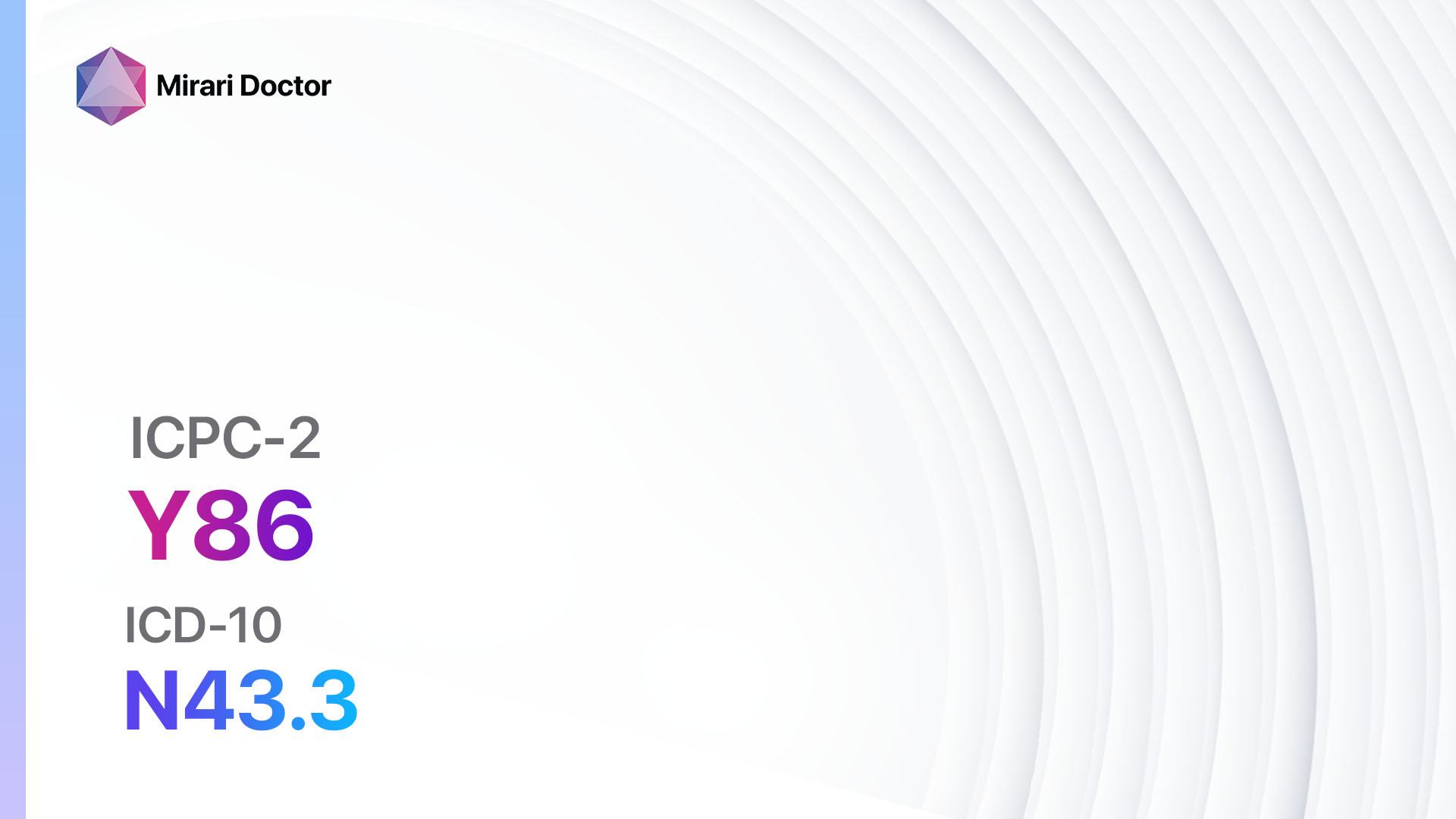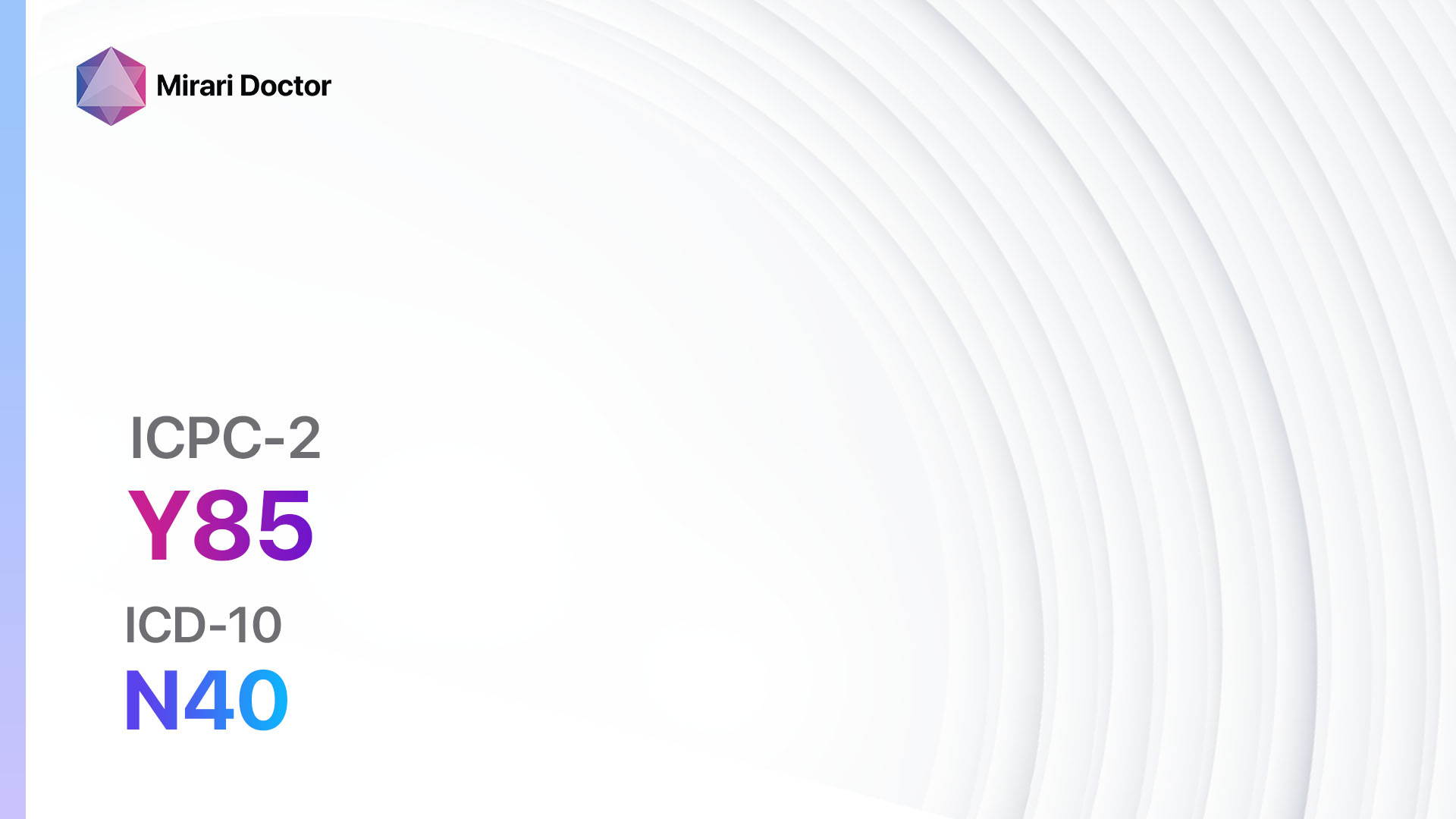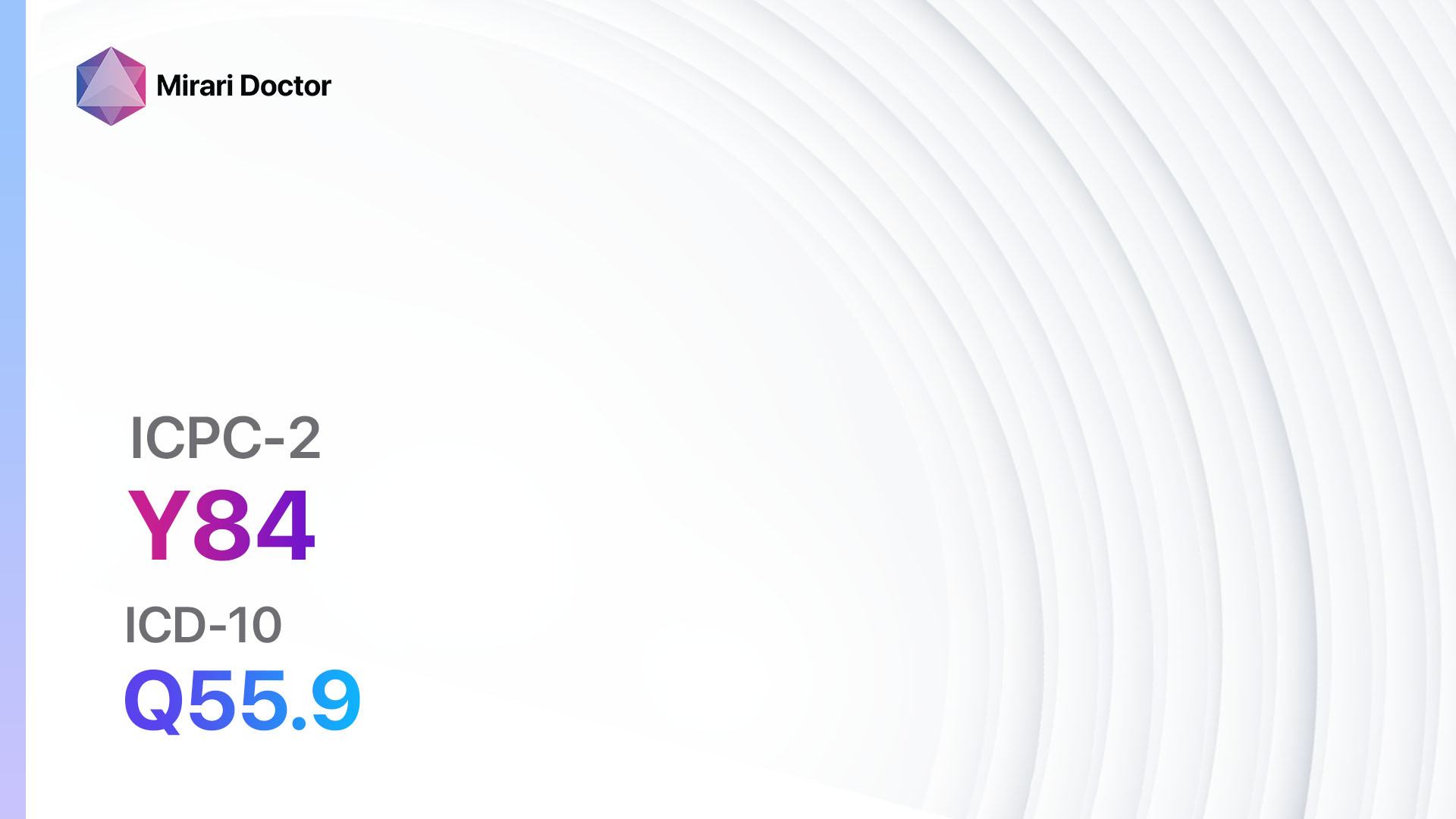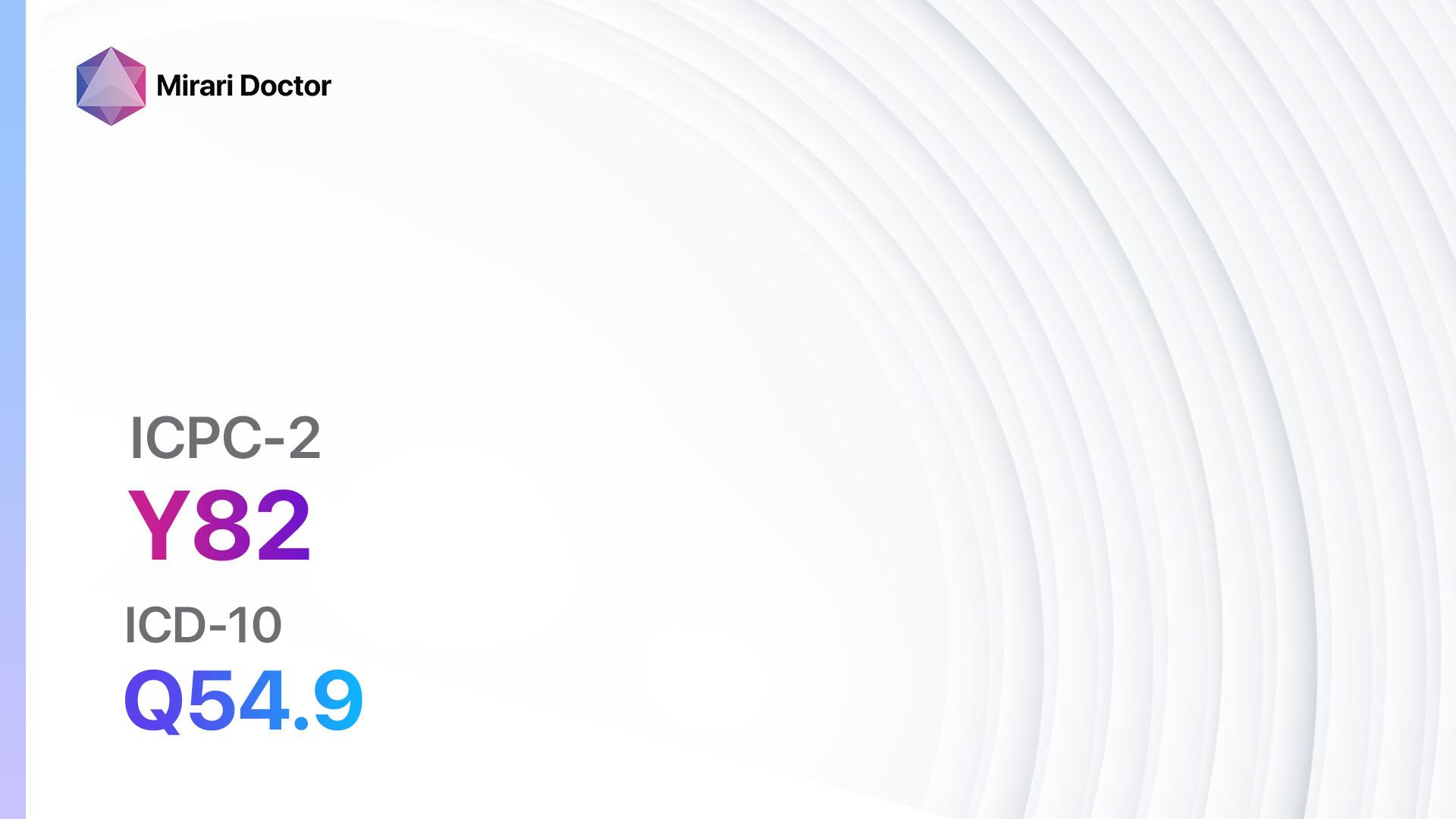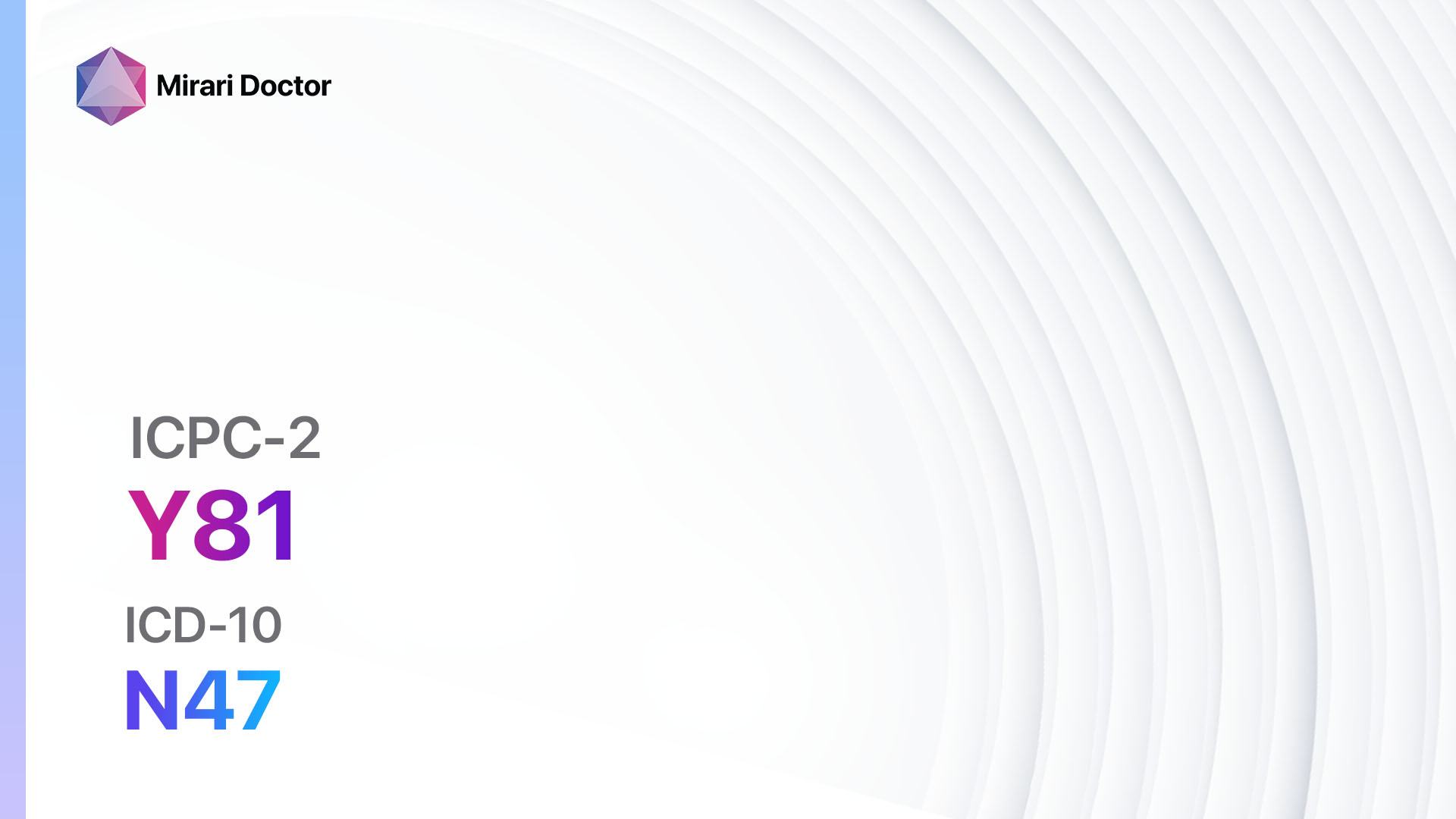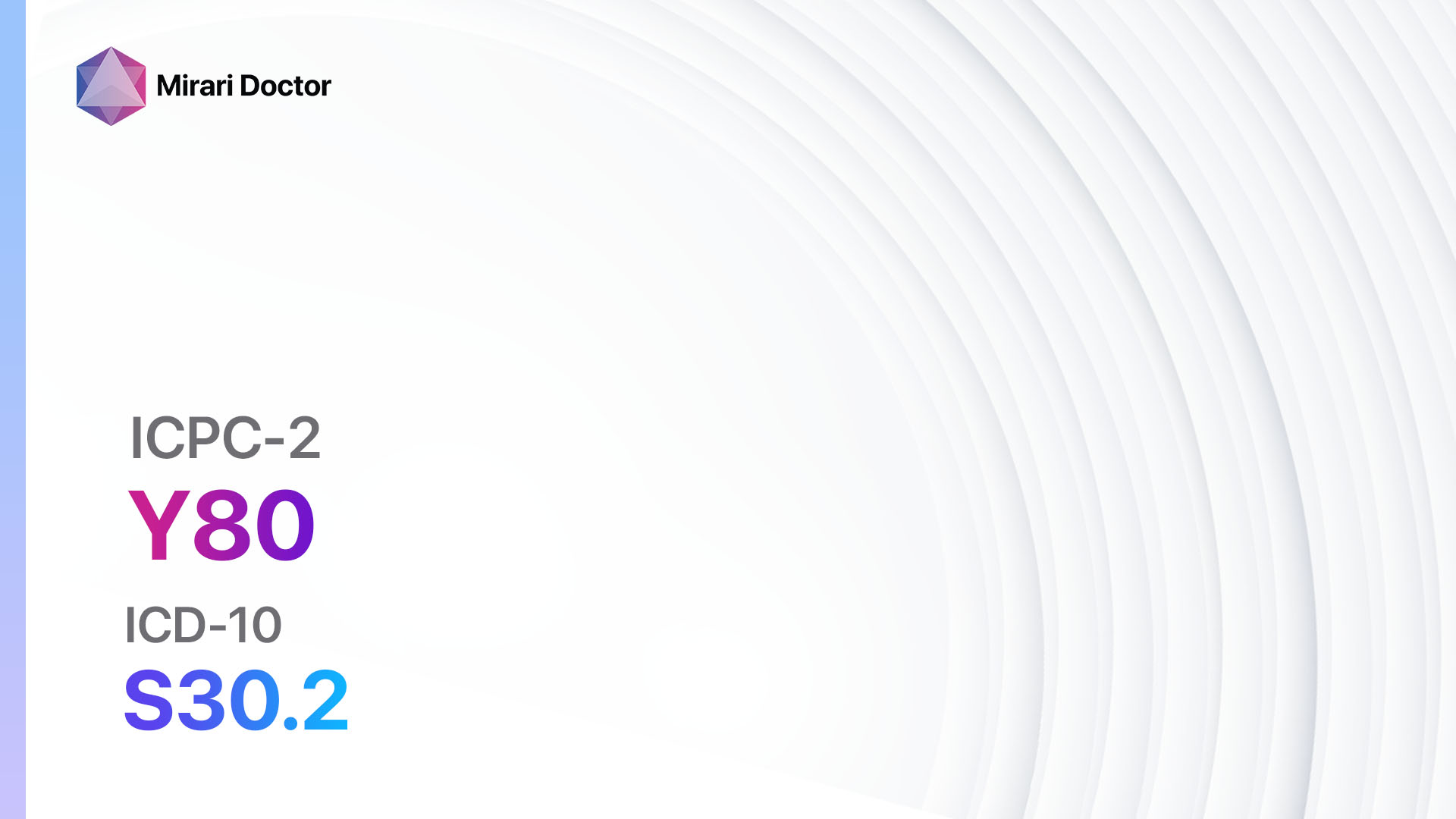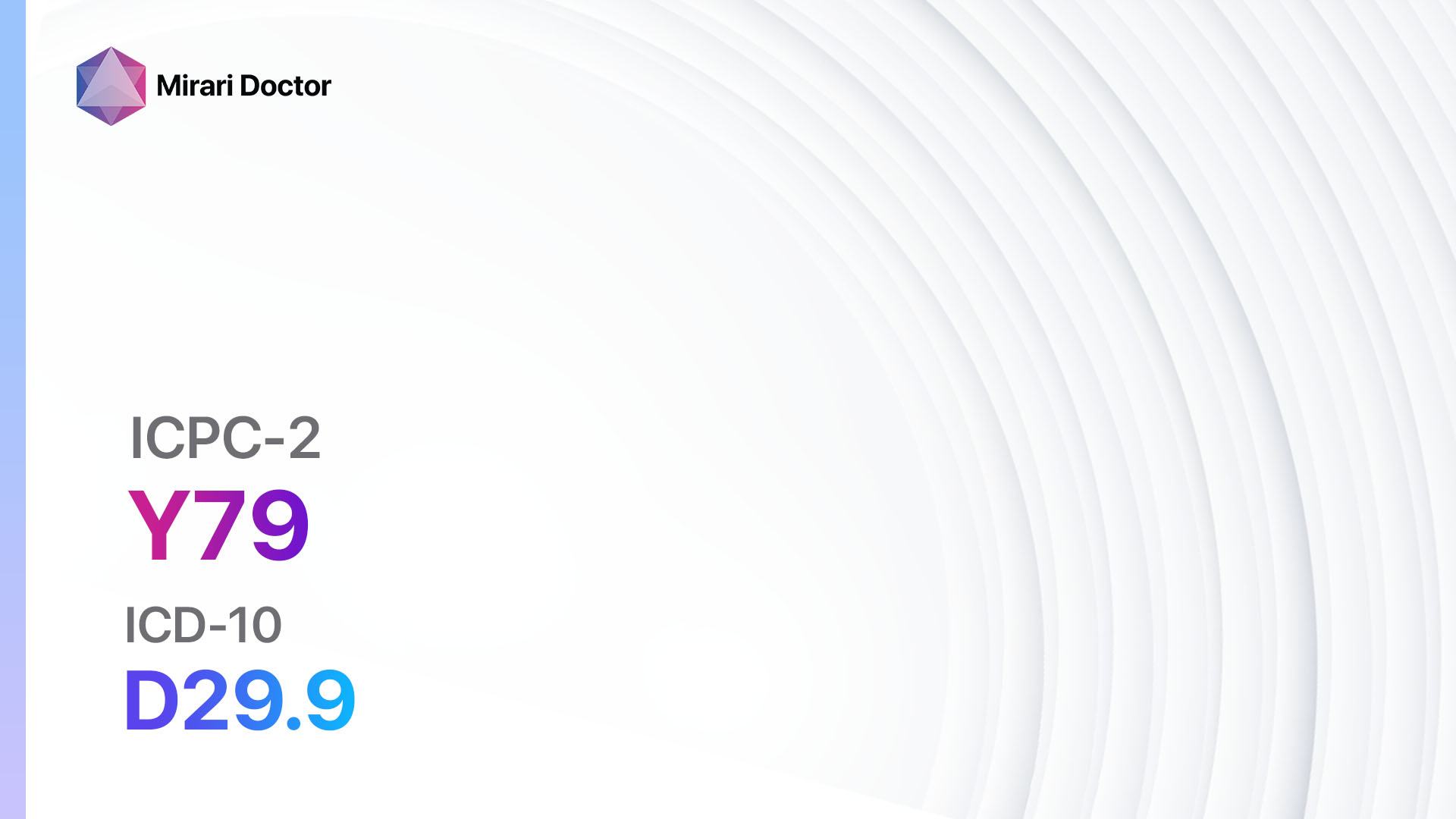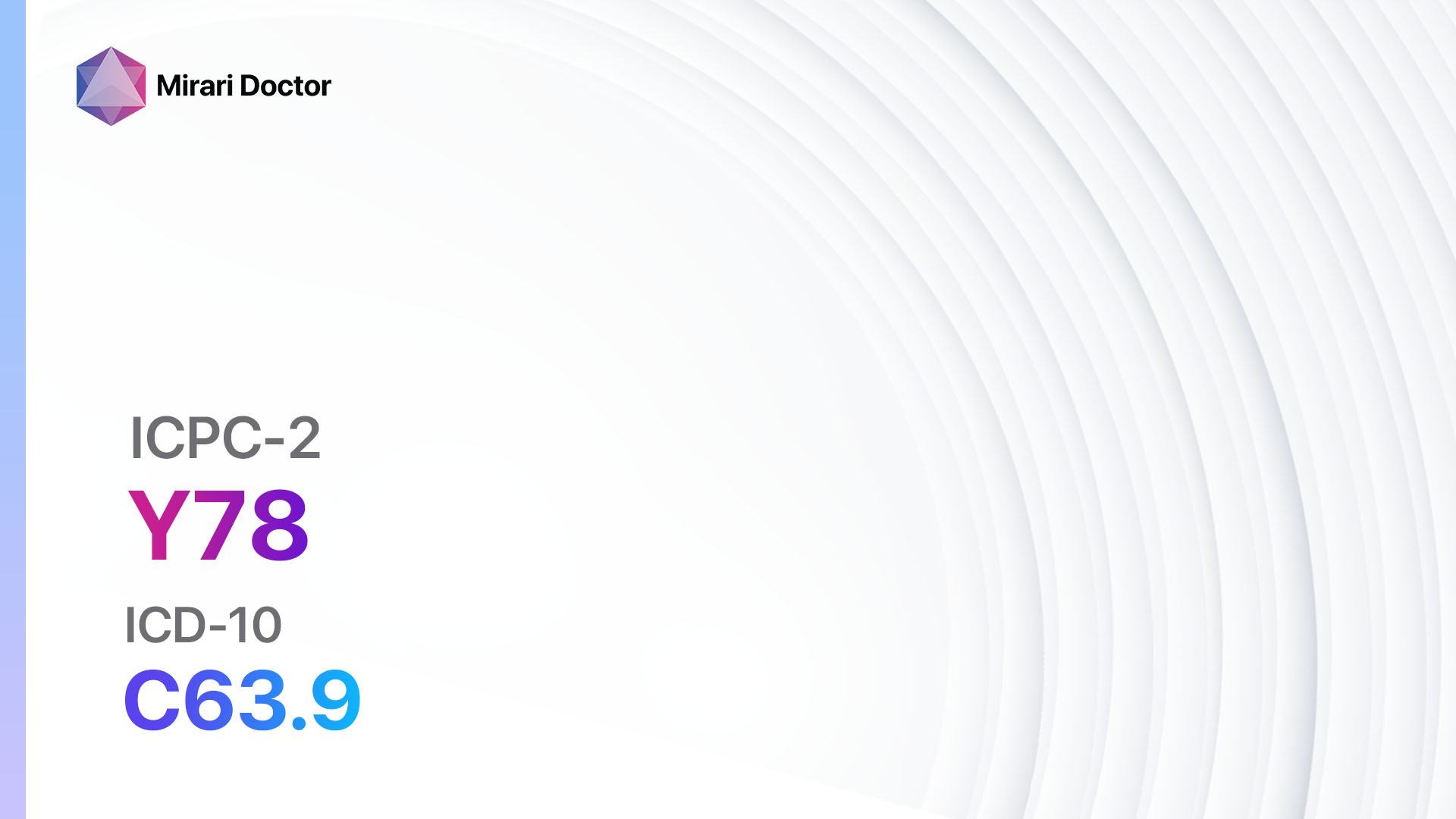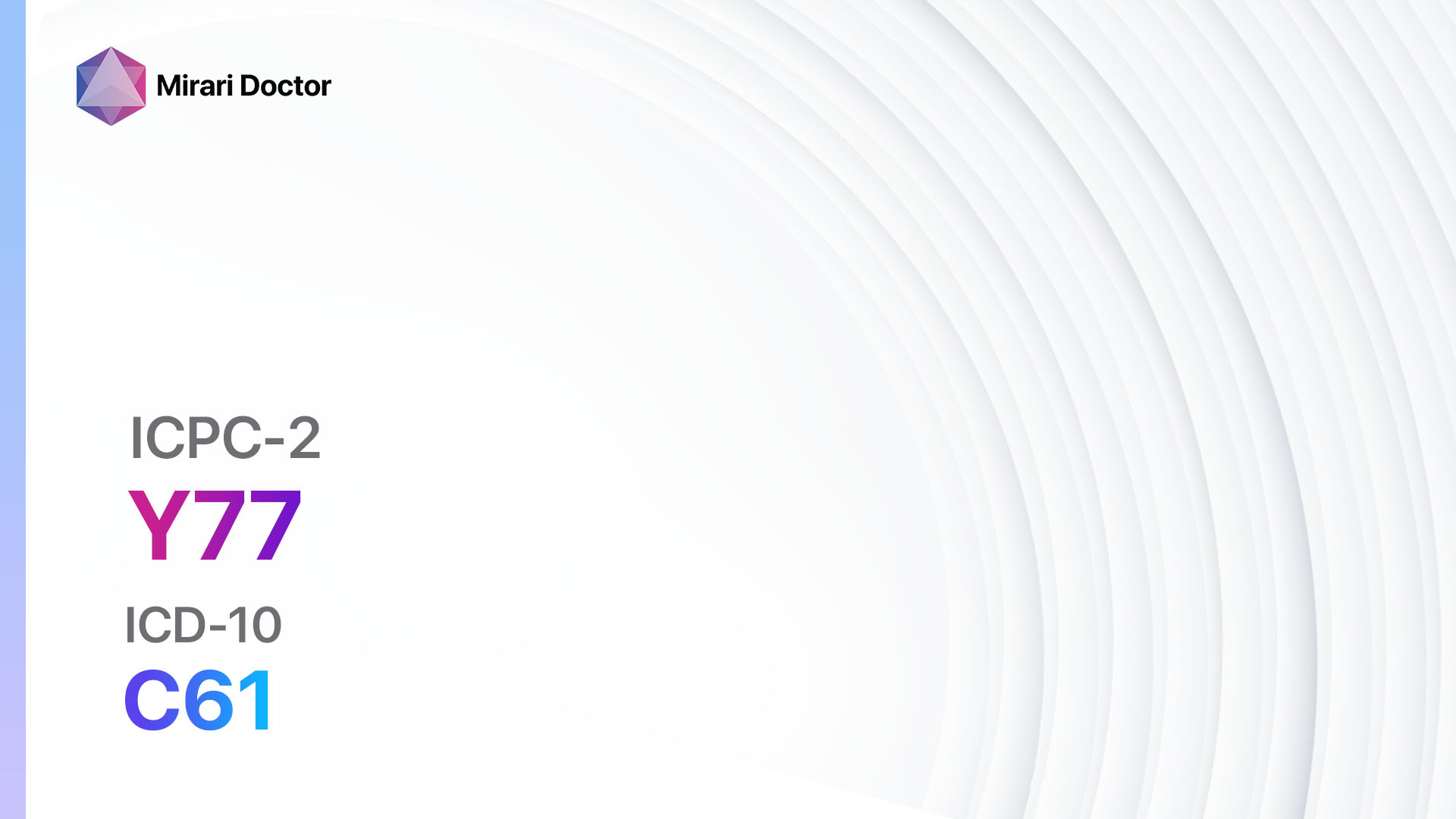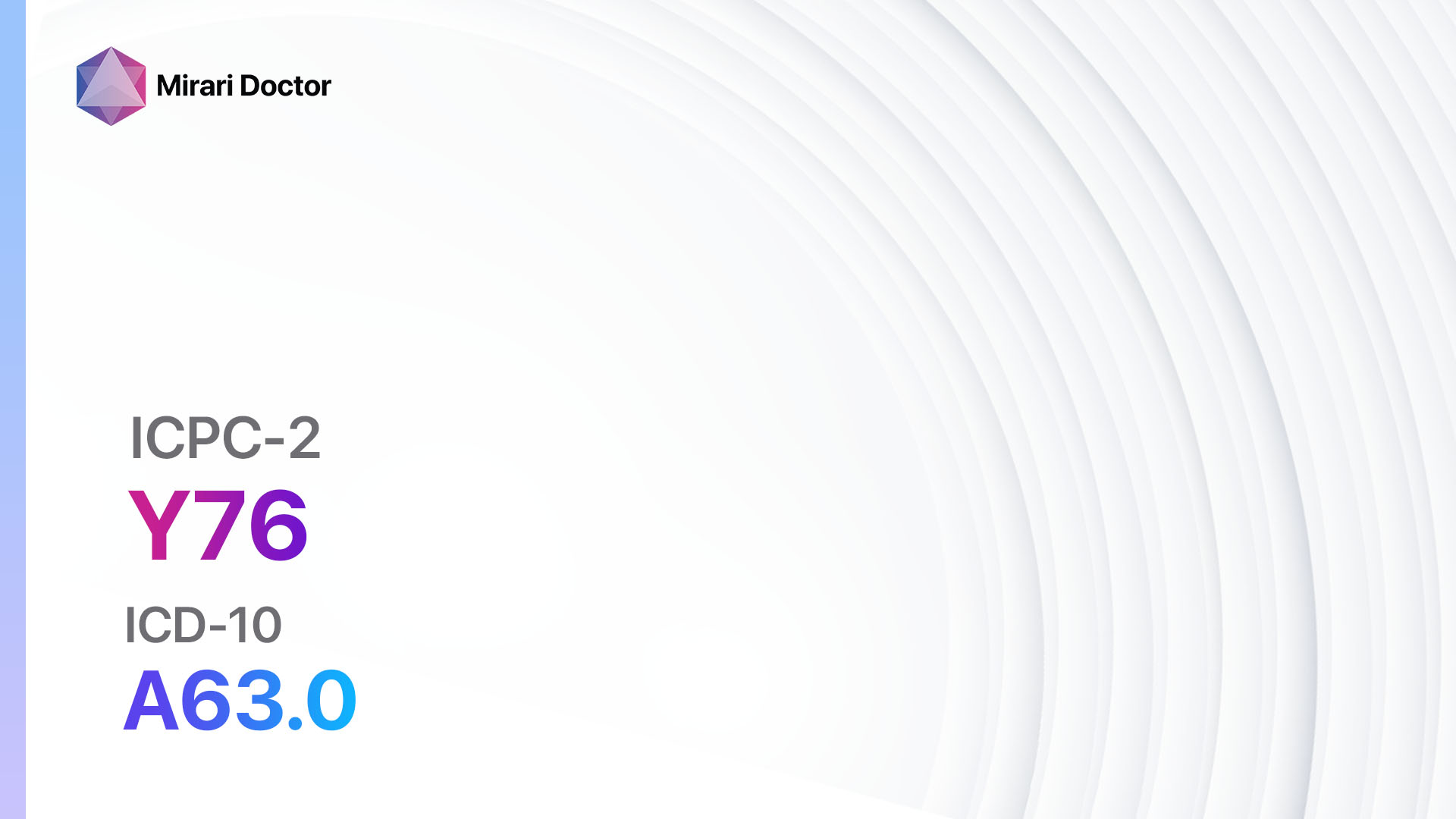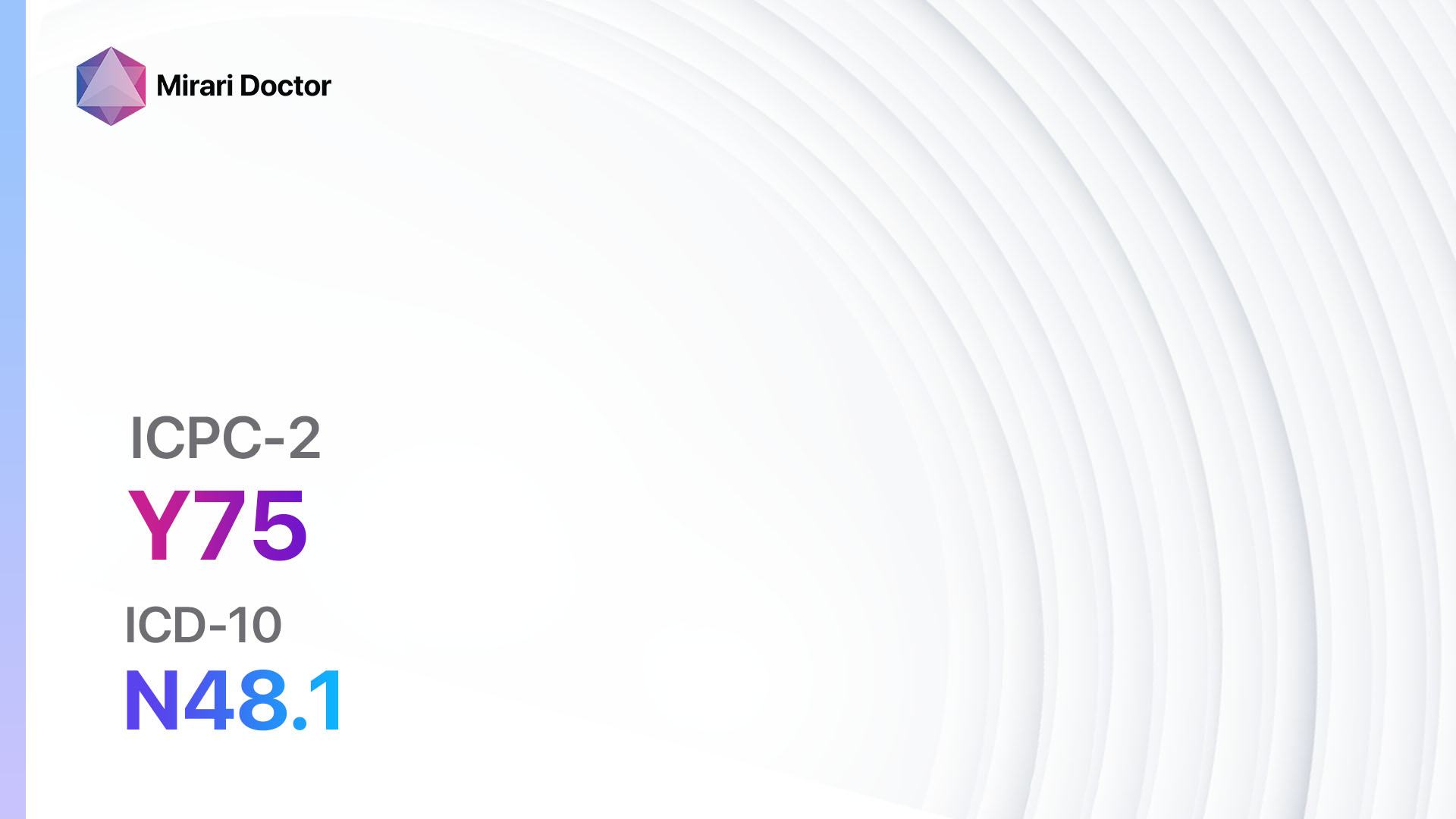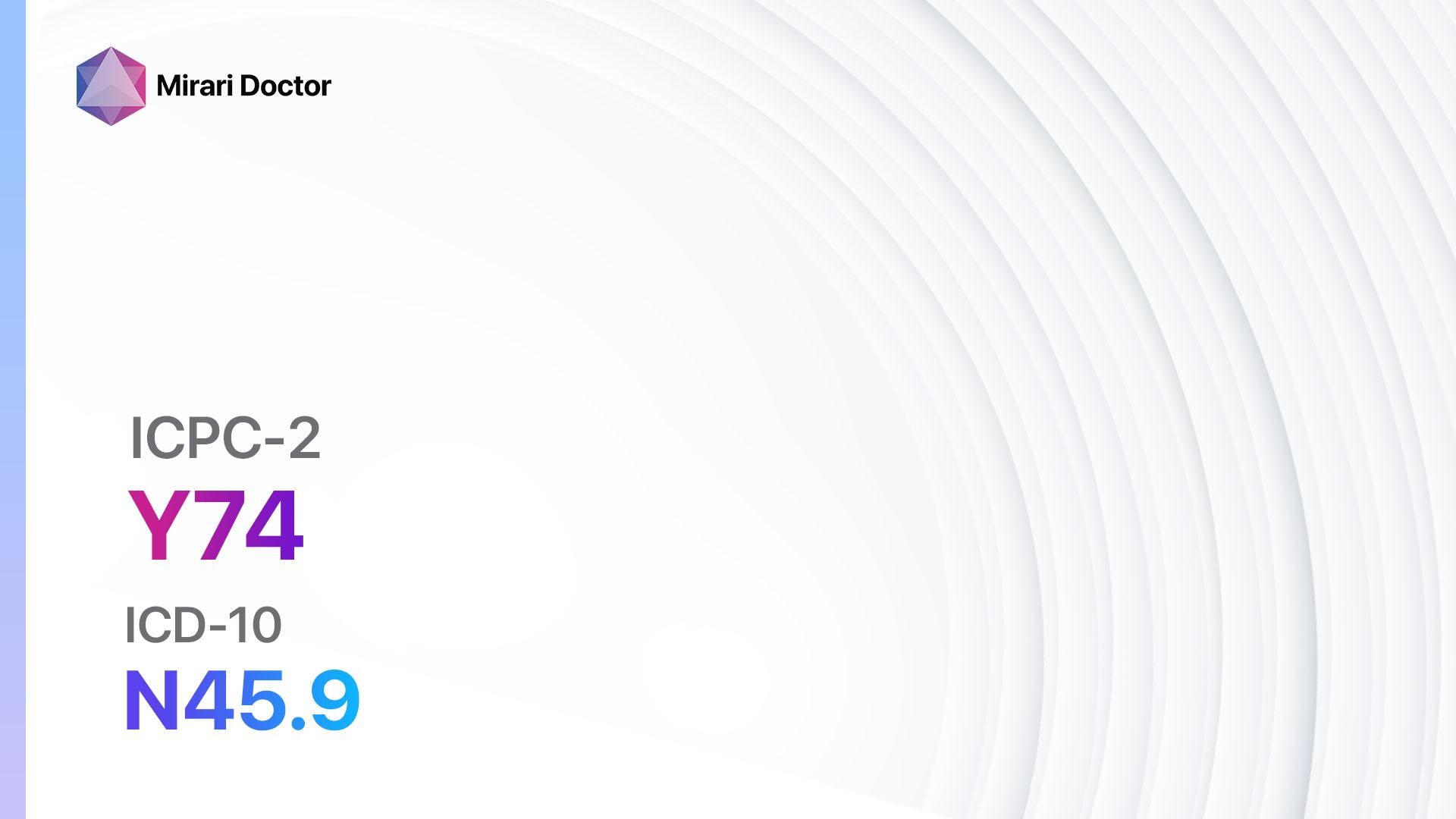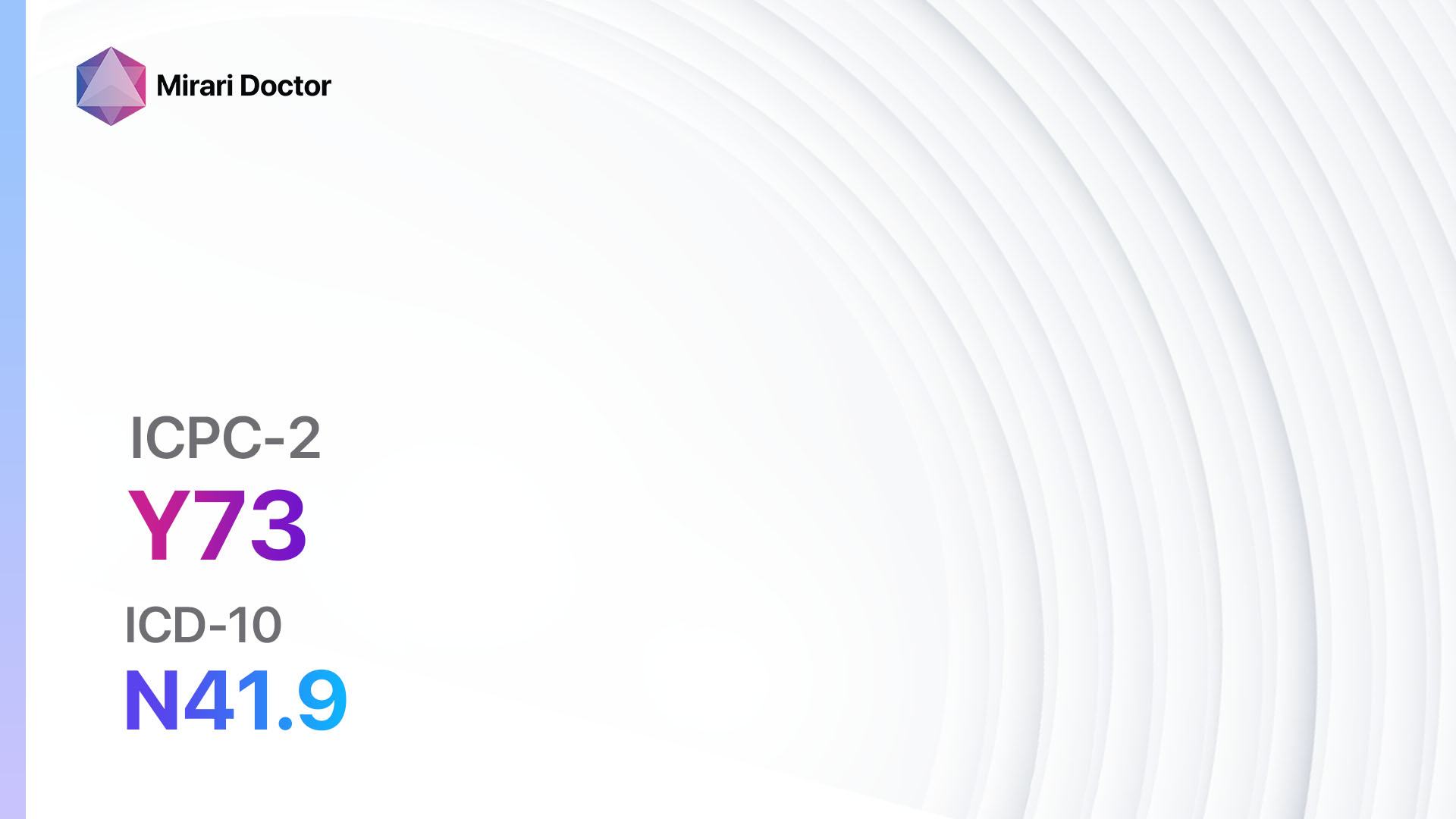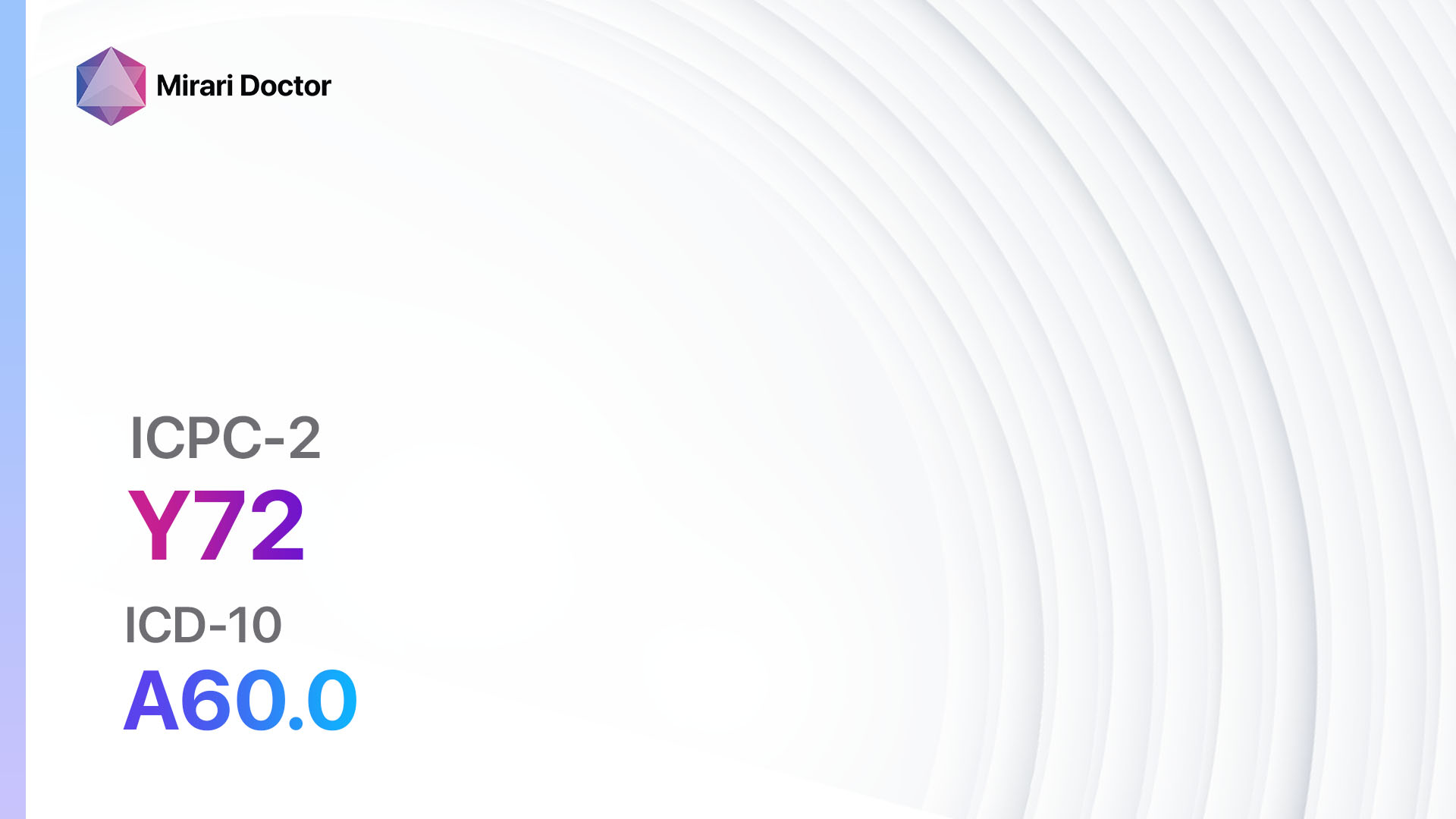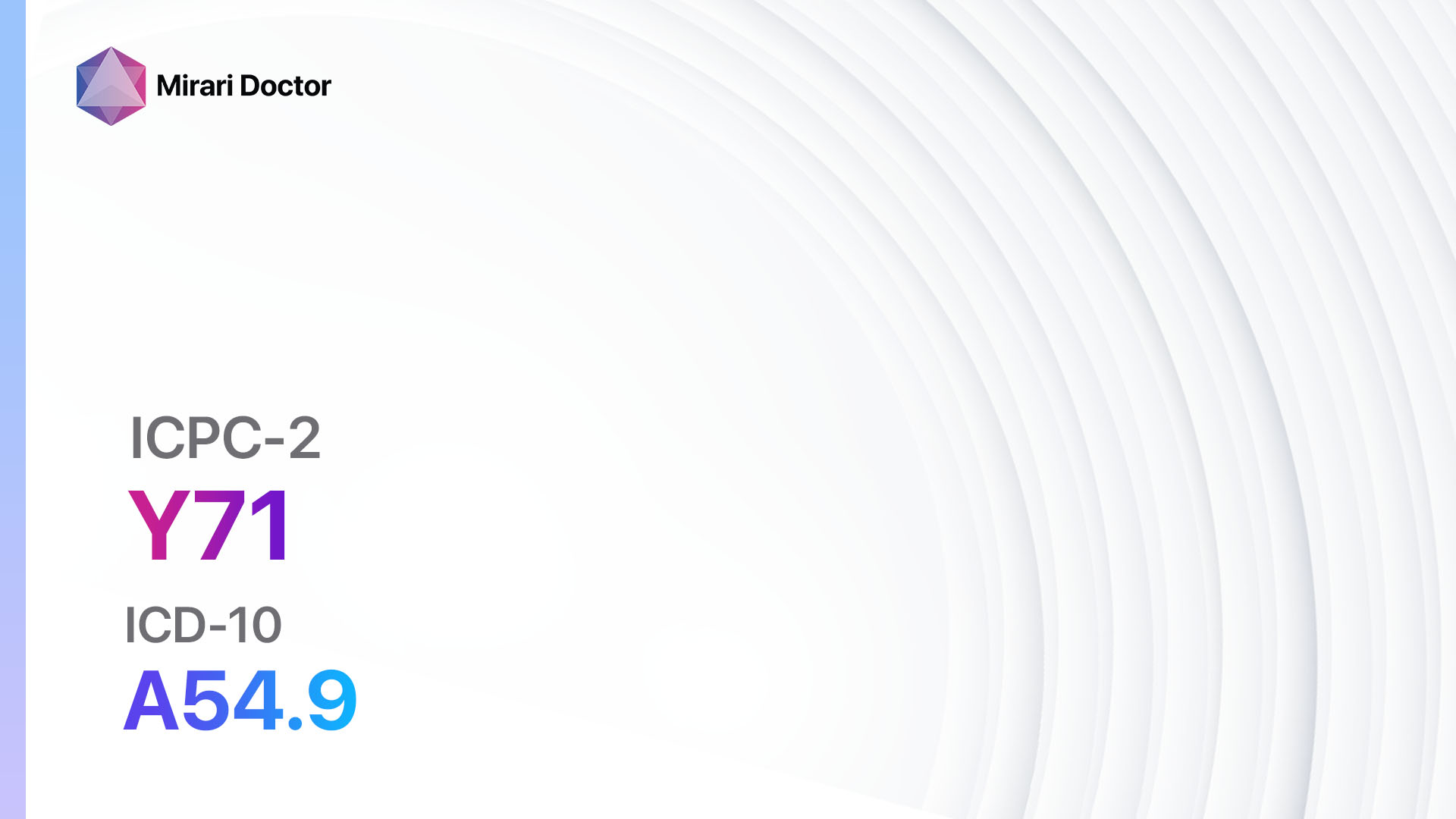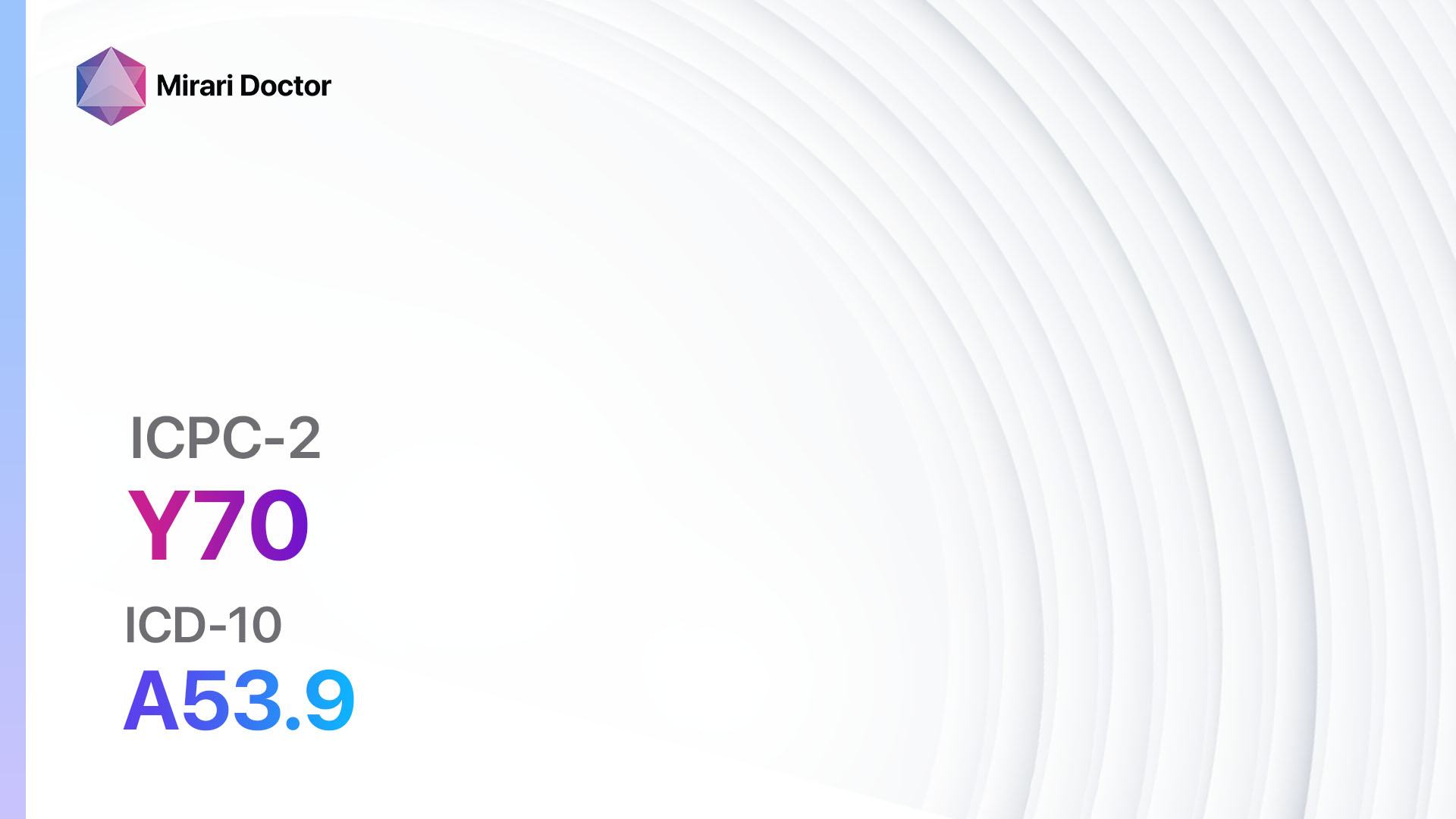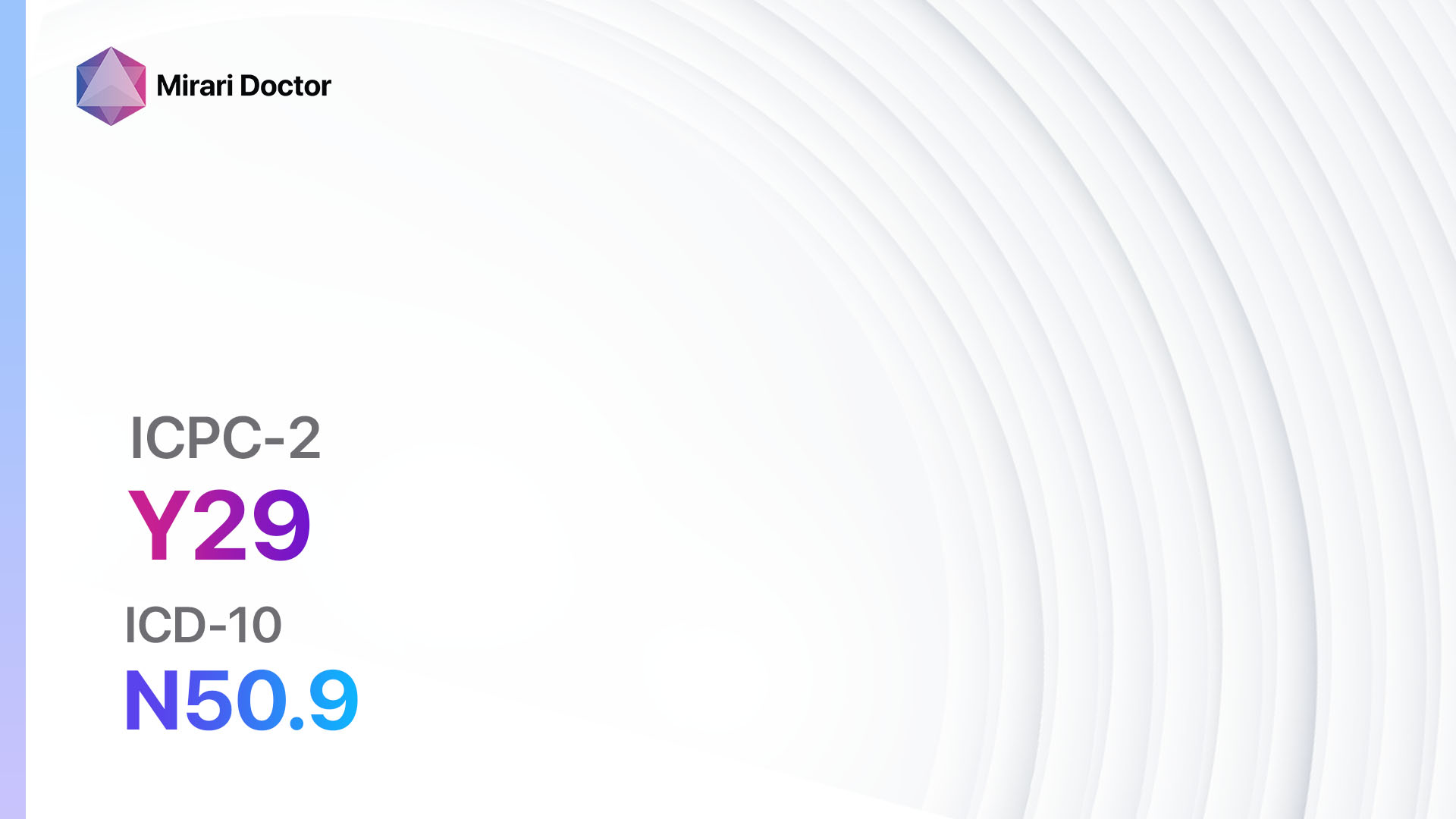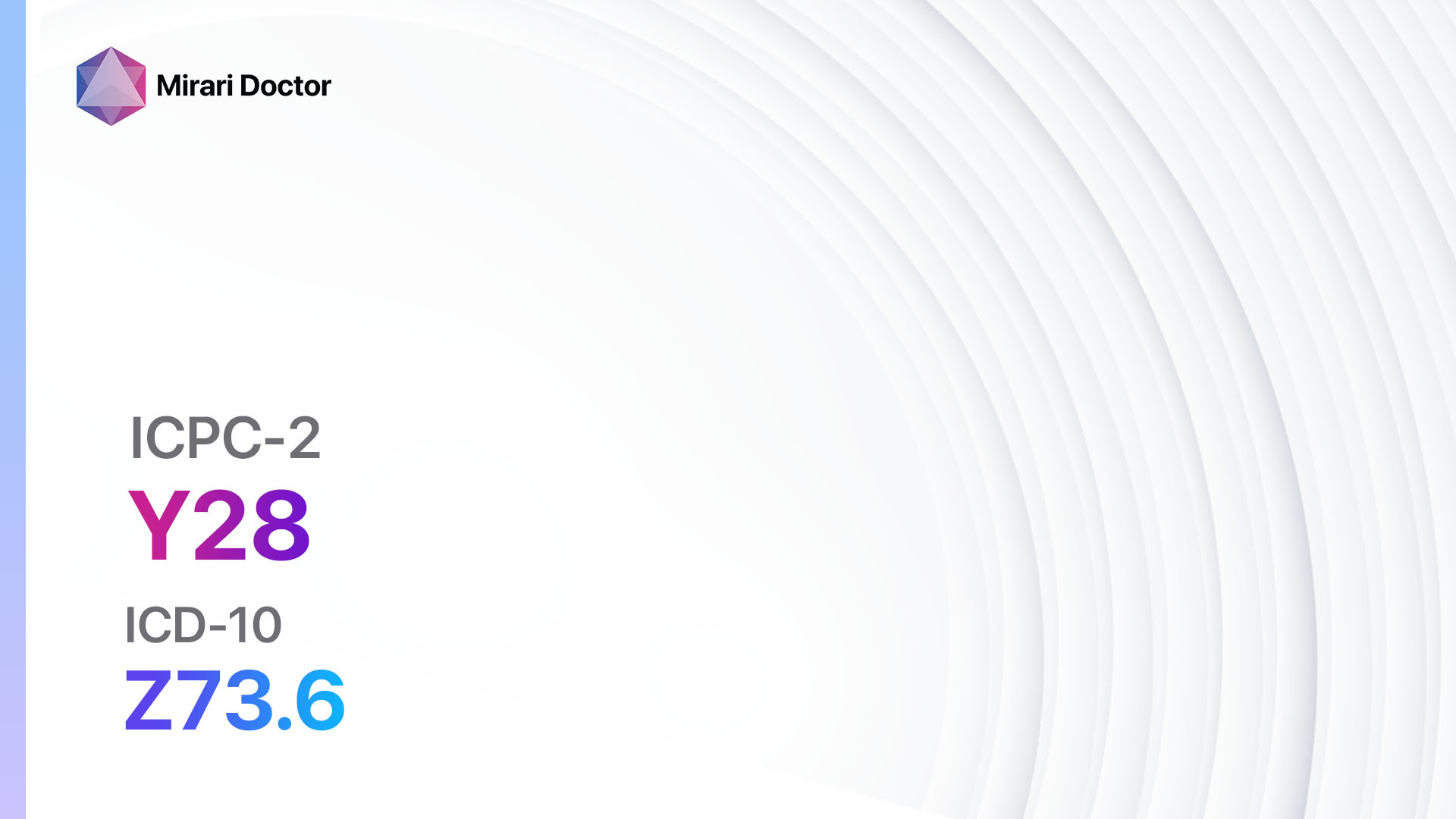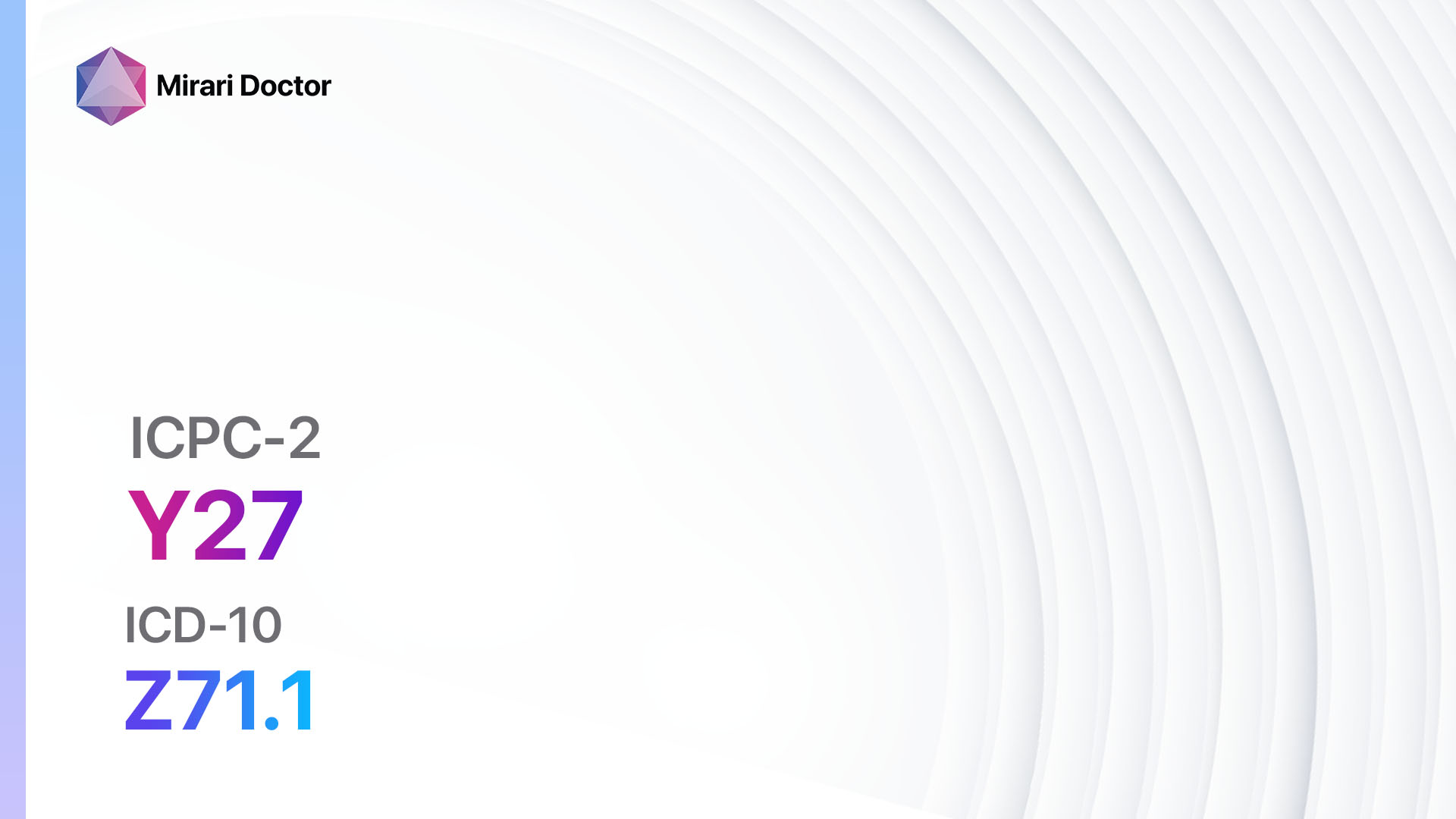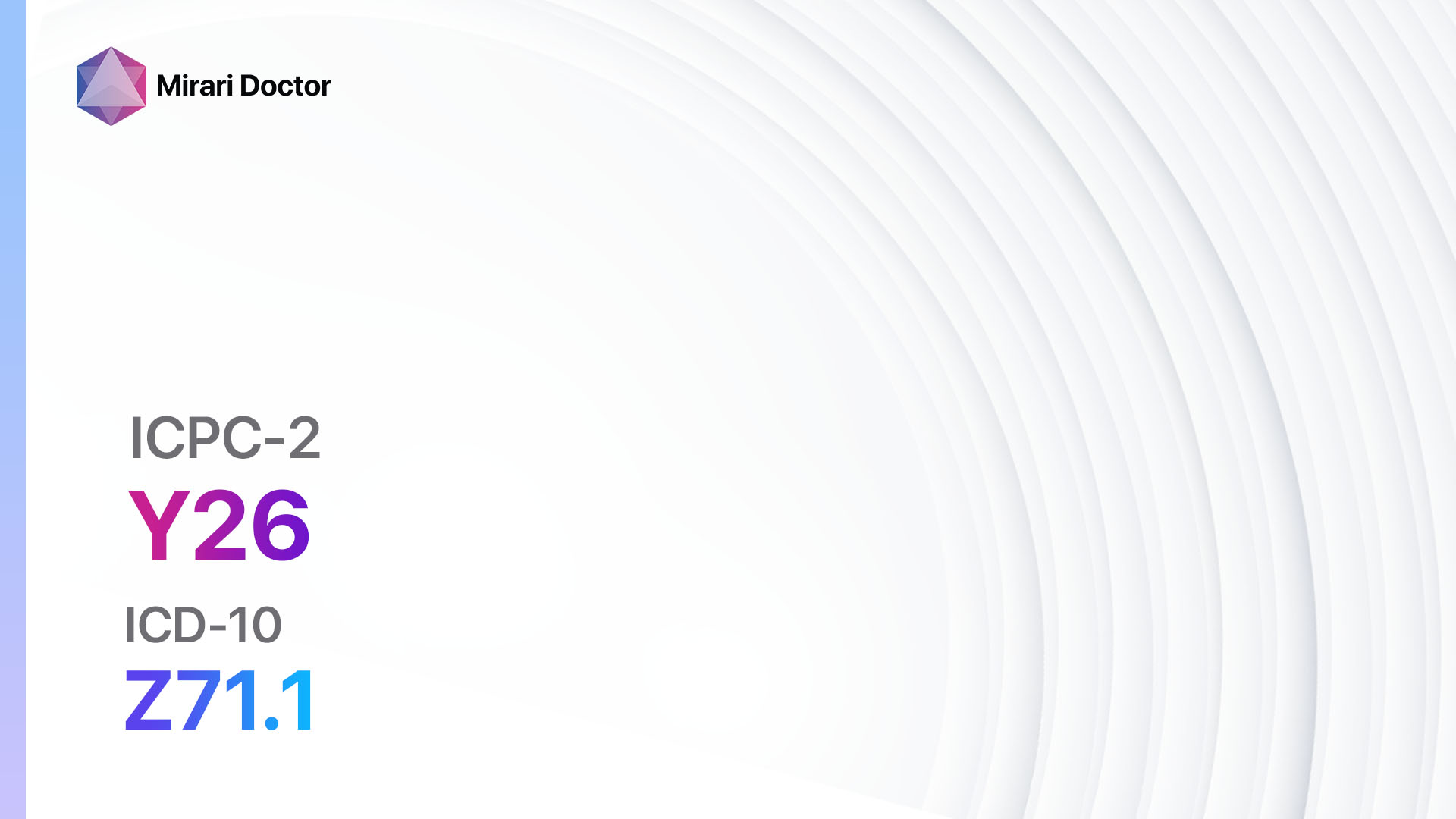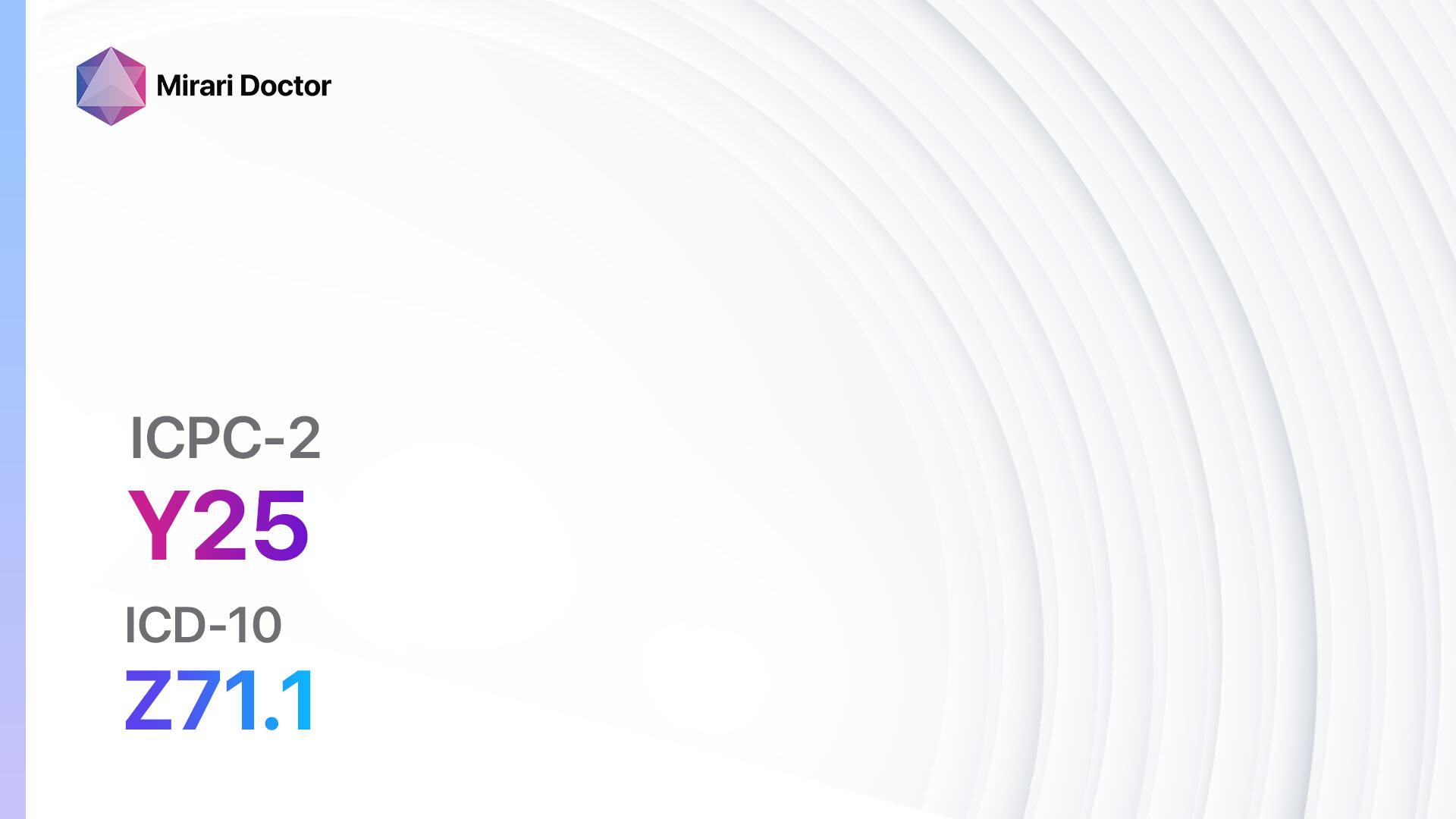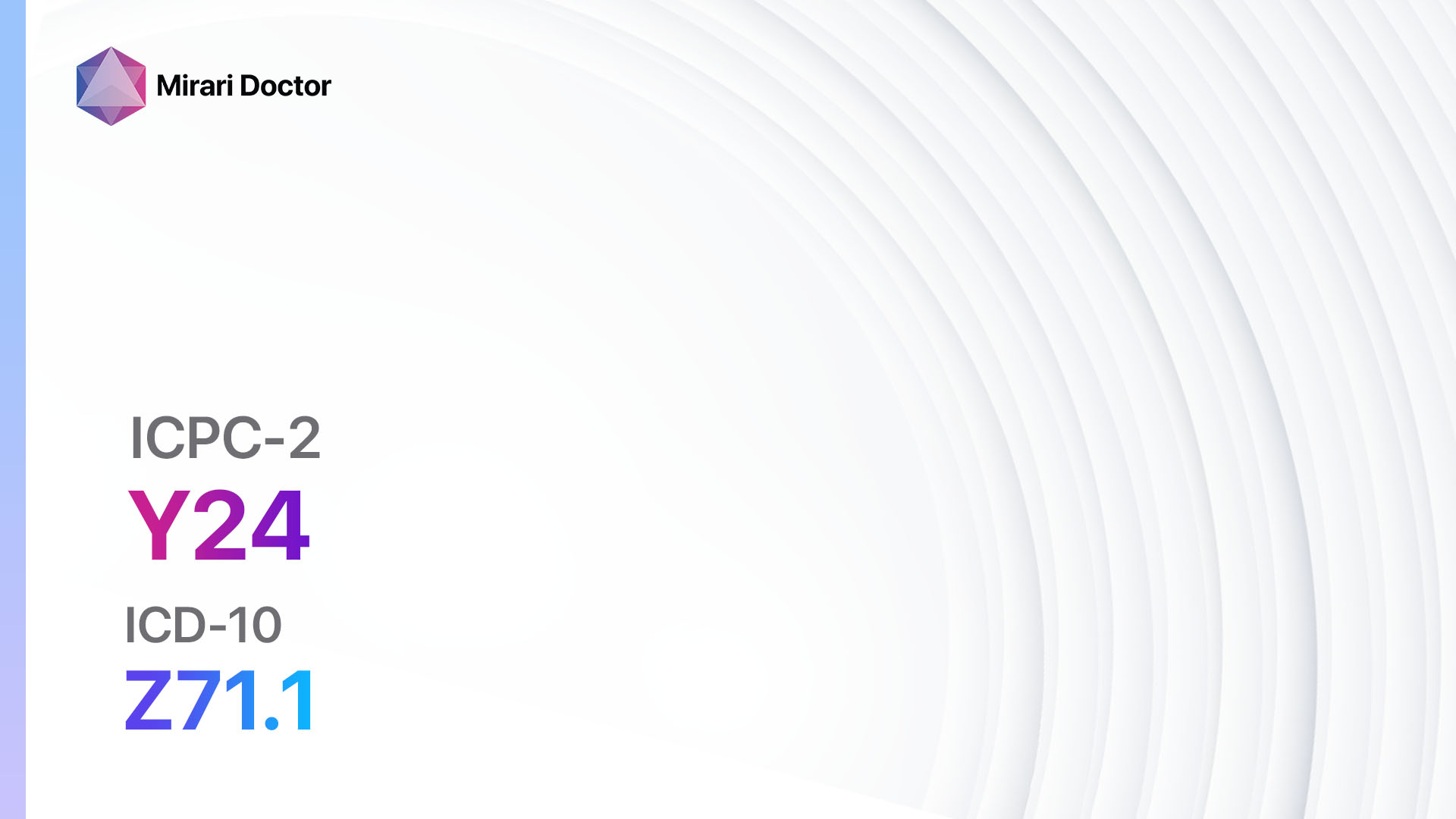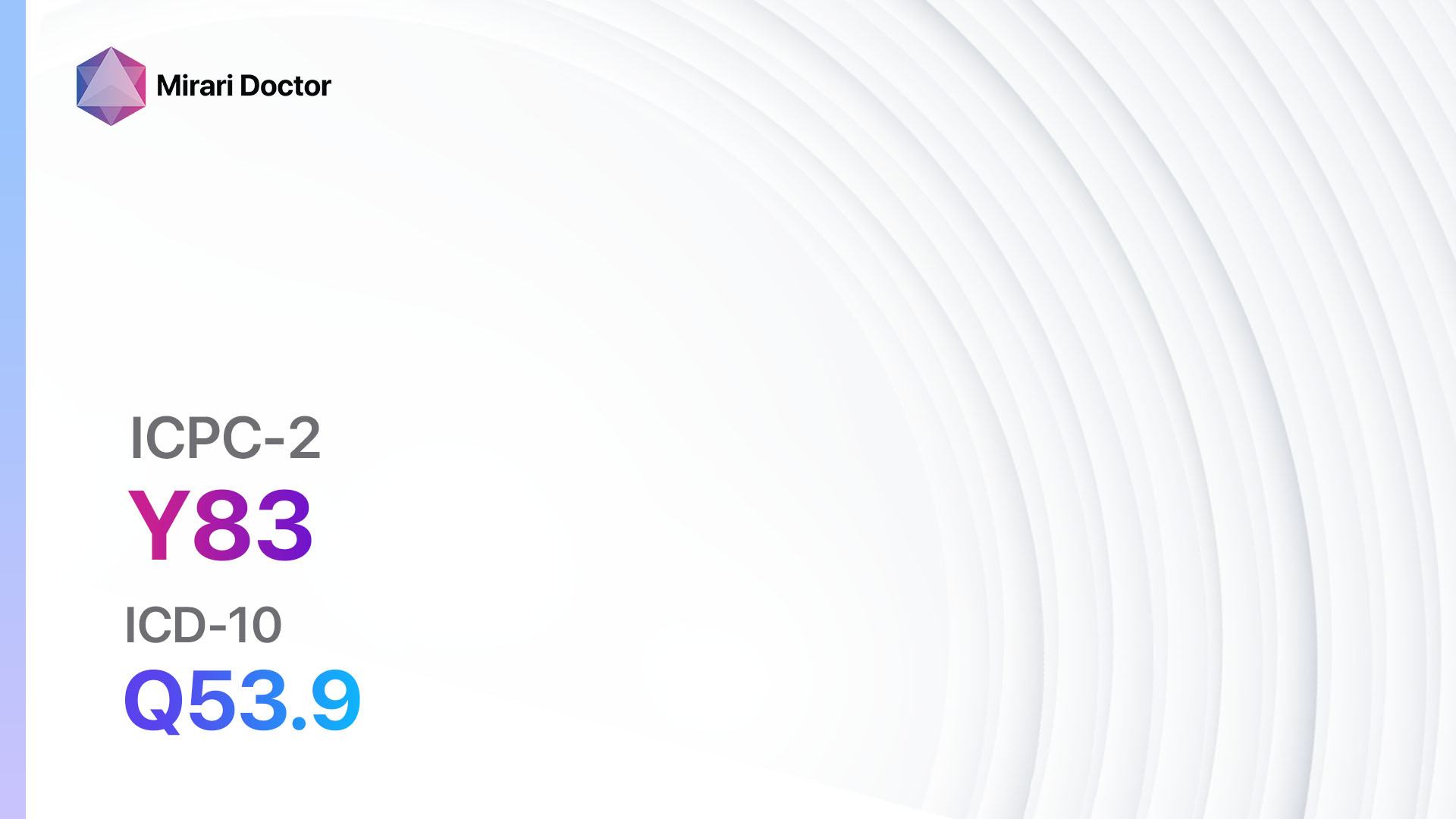
Introduction
Undescended testicle, also known as cryptorchidism, is a condition where one or both testicles fail to descend into the scrotum during fetal development. This condition is significant because it can lead to potential complications, such as infertility and increased risk of testicular cancer.[1]The aim of this guide is to provide a comprehensive overview of the diagnosis and possible interventions for undescended testicle.
Codes
Symptoms
- Absence of one or both testicles in the scrotum
- Empty scrotum with palpable testicle in the inguinal canal or abdomen[4]
Causes
- Hormonal factors: Insufficient production of hormones necessary for testicular descent
- Mechanical factors: Defects in the anatomical structures responsible for testicular descent[5]
Diagnostic Steps
Medical History
- Gather information about the patient’s birth history, including any complications during pregnancy or delivery
- Inquire about any family history of undescended testicle or other reproductive disorders
- Ask about any symptoms or concerns related to the condition[6]
Physical Examination
- Perform a thorough physical examination, including inspection and palpation of the scrotum, groin, and abdomen
- Look for the presence of one or both testicles in the scrotum or any evidence of undescended testicles in the inguinal canal or abdomen
- Assess the size, consistency, and mobility of the testicles[7]
Laboratory Tests
- Hormone levels: Measure hormone levels, such as testosterone and luteinizing hormone, to evaluate hormonal function and rule out any underlying endocrine disorders
- Genetic testing: Consider genetic testing to identify any genetic abnormalities associated with undescended testicle[8]
Diagnostic Imaging
- Ultrasound: Use ultrasound imaging to visualize the location of the undescended testicle, assess its size and shape, and evaluate the presence of any associated abnormalities
- Magnetic resonance imaging (MRI): Consider MRI if ultrasound results are inconclusive or to further evaluate the anatomy of the undescended testicle[9]
Other Tests
- Laparoscopy: Perform laparoscopy to directly visualize the undescended testicle and assess its position and viability, especially in cases where the location cannot be determined through other imaging modalities
- Biopsy: Consider biopsy of the undescended testicle if there are any suspicious findings or concerns about testicular cancer[10]
Follow-up and Patient Education
- Schedule regular follow-up appointments to monitor the progress of the undescended testicle and assess any potential complications
- Educate the patient and their family about the importance of early intervention and the potential risks and complications associated with untreated undescended testicle[1][4]
Possible Interventions
Traditional Interventions
Medications:
Top 5 drugs for Undescended testicle:
- Hormone therapy (e.g., human chorionic gonadotropin (hCG)):
- Cost: Approximately $100-$200 per injection.
- Contraindications: Hypersensitivity to hCG, hormone-sensitive tumors.
- Side effects: Acne, mood swings, fluid retention.
- Severe side effects: Allergic reactions, blood clots.
- Drug interactions: None reported.
- Warning: Requires close monitoring of hormone levels and regular injections.
- Surgery (Orchiopexy):
- Cost: Approximately $3,000-$8,000.
- Contraindications: Uncontrolled bleeding disorders, severe infections.
- Side effects: Pain, swelling, bruising.
- Severe side effects: Infection, damage to surrounding structures.
- Drug interactions: None reported.
- Warning: Requires general anesthesia and post-operative care.
- Gonadotropin-releasing hormone agonists (e.g., leuprolide):
- Cost: Approximately $600-$1,000 per injection.
- Contraindications: Hypersensitivity to leuprolide, undiagnosed abnormal vaginal bleeding.
- Side effects: Hot flashes, decreased libido, mood changes.
- Severe side effects: Allergic reactions, cardiovascular events.
- Drug interactions: None reported.
- Warning: Requires close monitoring of hormone levels and regular injections.
- Anti-estrogens (e.g., tamoxifen):
- Cost: Approximately $30-$50 per month.
- Contraindications: History of blood clots, pregnancy.
- Side effects: Hot flashes, nausea, vaginal discharge.
- Severe side effects: Blood clots, endometrial cancer.
- Drug interactions: CYP2D6 inhibitors, warfarin.
- Warning: Requires regular monitoring for potential side effects.
- Selective estrogen receptor modulators (e.g., raloxifene):
- Cost: Approximately $60-$100 per month.
- Contraindications: History of blood clots, pregnancy.
- Side effects: Hot flashes, leg cramps, flu-like symptoms.
- Severe side effects: Blood clots, stroke.
- Drug interactions: CYP3A4 inhibitors, warfarin.
- Warning: Requires regular monitoring for potential side effects.
Alternative Drugs:
- None identified for undescended testicle.
Surgical Procedures:
- Orchiopexy: Surgical procedure to reposition the undescended testicle into the scrotum. Cost: Approximately $3,000-$8,000.
- Laparoscopic orchiopexy: Minimally invasive surgical procedure to reposition the undescended testicle using laparoscopic instruments. Cost: Approximately $5,000-$10,000.
Alternative Interventions
- Acupuncture: May help improve blood flow and promote testicular descent. Cost: $60-$120 per session.
- Herbal supplements: Some herbal supplements, such as Tribulus terrestris, may have potential benefits for promoting testicular descent. Cost: Varies depending on the specific supplement.
- Nutritional modifications: Ensuring a balanced diet with adequate intake of essential nutrients, such as zinc and vitamin D, may support testicular descent. Cost: Varies depending on dietary choices.
- Scrotal cooling: Application of cool packs or special devices to lower scrotal temperature, which may promote testicular descent. Cost: Varies depending on the cooling method used.
Lifestyle Interventions
- Avoidance of exposure to environmental toxins: Minimize exposure to endocrine-disrupting chemicals, such as pesticides and certain plastics, which may interfere with testicular descent. Cost: Varies depending on lifestyle choices.
- Regular physical activity: Engaging in regular exercise and maintaining a healthy weight may support normal testicular descent. Cost: Varies depending on individual preferences for exercise.
- Adequate sleep: Ensuring sufficient sleep and proper rest may contribute to overall reproductive health. Cost: None.
- Stress management: Implementing stress-reduction techniques, such as meditation or counseling, may positively impact reproductive health. Cost: Varies depending on chosen stress management methods.
It is important to note that the cost ranges provided are approximate and may vary depending on the location and availability of the interventions.
Mirari Cold Plasma Alternative Intervention
Understanding Mirari Cold Plasma
- Safe and Non-Invasive Treatment: Mirari Cold Plasma is a safe and non-invasive treatment option for various skin conditions. It does not require incisions, minimizing the risk of scarring, bleeding, or tissue damage.
- Efficient Extraction of Foreign Bodies: Mirari Cold Plasma facilitates the removal of foreign bodies from the skin by degrading and dissociating organic matter, allowing easier access and extraction.
- Pain Reduction and Comfort: Mirari Cold Plasma has a local analgesic effect, providing pain relief during the treatment, making it more comfortable for the patient.
- Reduced Risk of Infection: Mirari Cold Plasma has antimicrobial properties, effectively killing bacteria and reducing the risk of infection.
- Accelerated Healing and Minimal Scarring: Mirari Cold Plasma stimulates wound healing and tissue regeneration, reducing healing time and minimizing the formation of scars.
Mirari Cold Plasma Prescription
Video instructions for using Mirari Cold Plasma Device – Y83 Undescended testicle (ICD-10:Q53.9)
| Mild | Moderate | Severe |
| Mode setting: 1 (Infection) Location: 0 (Localized) Morning: 15 minutes, Evening: 15 minutes | Mode setting: 1 (Infection) Location: 0 (Localized) Morning: 30 minutes, Lunch: 30 minutes, Evening: 30 minutes | Mode setting: 1 (Infection) Location: 0 (Localized) Morning: 30 minutes, Lunch: 30 minutes, Evening: 30 minutes |
| Mode setting: 2 (Wound Healing) Location: 0 (Localized) Morning: 15 minutes, Evening: 15 minutes | Mode setting: 2 (Wound Healing) Location: 0 (Localized) Morning: 30 minutes, Lunch: 30 minutes, Evening: 30 minutes | Mode setting: 2 (Wound Healing) Location: 0 (Localized) Morning: 30 minutes, Lunch: 30 minutes, Evening: 30 minutes |
| Modesetting: 3 (Antiviral Therapy) Location:0 (Localized) Morning:15 minutes, Evening:15minutes | Modesetting: 3 (Antiviral Therapy) Location:0 (Localized) Morning:30 minutes, Lunch:30 minutes, Evening:30 minutes | Modesetting: 3 (Antiviral Therapy) Location:0 (Localized) Morning:30 minutes, Lunch:30 minutes, Evening:30 minutes |
| Total Morning: 45minutesapprox.$7.50USD, Evening: 45minutesapprox.$7.50USD | Total Morning: 90minutesapprox.$15USD, Lunch: 90minutesapprox.$15USD, Evening: 90minutesapprox.$15USD | Total Morning: 90minutesapprox.$15USD, Lunch: 90minutesapprox.$15USD, Evening: 90minutesapprox.$15USD |
| Usualtreatmentfor7-60daysapprox.$105USD–$900USD | Usualtreatmentfor6-8weeksapprox.$1,890USD–$2,520USD | Usualtreatmentfor3-6monthsapprox.$4,050USD–$8,100USD |
 |
|
Use the Mirari Cold Plasma device to treat Undescended testicle effectively.
WARNING: MIRARI COLD PLASMA IS DESIGNED FOR THE HUMAN BODY WITHOUT ANY ARTIFICIAL OR THIRD PARTY PRODUCTS. USE OF OTHER PRODUCTS IN COMBINATION WITH MIRARI COLD PLASMA MAY CAUSE UNPREDICTABLE EFFECTS, HARM OR INJURY. PLEASE CONSULT A MEDICAL PROFESSIONAL BEFORE COMBINING ANY OTHER PRODUCTS WITH USE OF MIRARI.
Step 1: Cleanse the Skin
- Start by cleaning the affected area of the skin with a gentle cleanser or mild soap and water. Gently pat the area dry with a clean towel.
Step 2: Prepare the Mirari Cold Plasma device
- Ensure that the Mirari Cold Plasma device is fully charged or has fresh batteries as per the manufacturer’s instructions. Make sure the device is clean and in good working condition.
- Switch on the Mirari device using the power button or by following the specific instructions provided with the device.
- Some Mirari devices may have adjustable settings for intensity or treatment duration. Follow the manufacturer’s instructions to select the appropriate settings based on your needs and the recommended guidelines.
Step 3: Apply the Device
- Place the Mirari device in direct contact with the affected area of the skin. Gently glide or hold the device over the skin surface, ensuring even coverage of the area experiencing.
- Slowly move the Mirari device in a circular motion or follow a specific pattern as indicated in the user manual. This helps ensure thorough treatment coverage.
Step 4: Monitor and Assess:
- Keep track of your progress and evaluate the effectiveness of the Mirari device in managing your Undescended testicle. If you have any concerns or notice any adverse reactions, consult with your health care professional.
Note
This guide is for informational purposes only and should not replace the advice of a medical professional. Always consult with your healthcare provider or a qualified medical professional for personal advice, diagnosis, or treatment. Do not solely rely on the information presented here for decisions about your health. Use of this information is at your own risk. The authors of this guide, nor any associated entities or platforms, are not responsible for any potential adverse effects or outcomes based on the content.
Mirari Cold Plasma System Disclaimer
- Purpose: The Mirari Cold Plasma System is a Class 2 medical device designed for use by trained healthcare professionals. It is registered for use in Thailand and Vietnam. It is not intended for use outside of these locations.
- Informational Use: The content and information provided with the device are for educational and informational purposes only. They are not a substitute for professional medical advice or care.
- Variable Outcomes: While the device is approved for specific uses, individual outcomes can differ. We do not assert or guarantee specific medical outcomes.
- Consultation: Prior to utilizing the device or making decisions based on its content, it is essential to consult with a Certified Mirari Tele-Therapist and your medical healthcare provider regarding specific protocols.
- Liability: By using this device, users are acknowledging and accepting all potential risks. Neither the manufacturer nor the distributor will be held accountable for any adverse reactions, injuries, or damages stemming from its use.
- Geographical Availability: This device has received approval for designated purposes by the Thai and Vietnam FDA. As of now, outside of Thailand and Vietnam, the Mirari Cold Plasma System is not available for purchase or use.
References
- Hutson JM, Balic A, Nation T, Southwell B. Cryptorchidism. Semin Pediatr Surg. 2010;19(3):215-224.
- World Health Organization. International Classification of Primary Care, Second edition (ICPC-2). Geneva: WHO; 2003.
- World Health Organization. International Statistical Classification of Diseases and Related Health Problems, 10th Revision (ICD-10). Geneva: WHO; 2019.
- Virtanen HE, Toppari J. Epidemiology and pathogenesis of cryptorchidism. Hum Reprod Update. 2008;14(1):49-58.
- Klonisch T, Fowler PA, Hombach-Klonisch S. Molecular and genetic regulation of testis descent and external genitalia development. Dev Biol. 2004;270(1):1-18.
- Kolon TF, Herndon CD, Baker LA, et al. Evaluation and treatment of cryptorchidism: AUA guideline. J Urol. 2014;192(2):337-345.
- Tasian GE, Copp HL. Diagnostic performance of ultrasound in nonpalpable cryptorchidism: a systematic review and meta-analysis. Pediatrics. 2011;127(1):119-128.
- Ferlin A, Zuccarello D, Zuccarello B, et al. Genetic alterations associated with cryptorchidism. JAMA. 2008;300(19):2271-2276.
- Kantarci M, Doganay S, Yalcin A, Aksoy Y, Yilmaz-Cankaya B, Salman B. Diagnostic performance of diffusion-weighted MRI in the detection of nonpalpable undescended testes: comparison with conventional MRI and surgical findings. AJR Am J Roentgenol. 2010;195(4):W268-W273.
- Cortes D, Thorup JM, Beck BL. Quantitative histology of germ cells in the undescended testes of human fetuses, neonates and infants. J Urol. 1995;154(3):1188-1192.
Related articles
Made in USA


